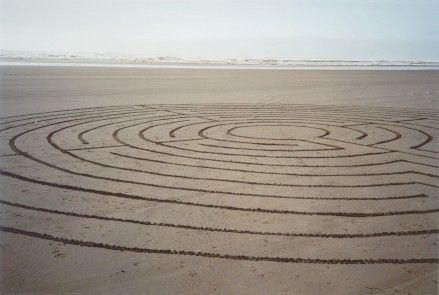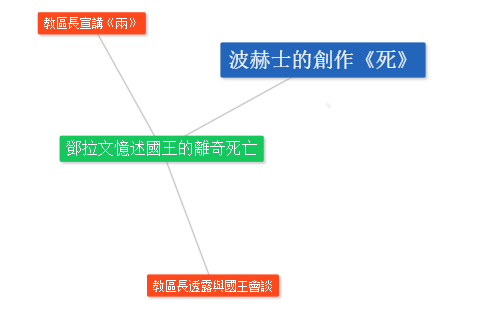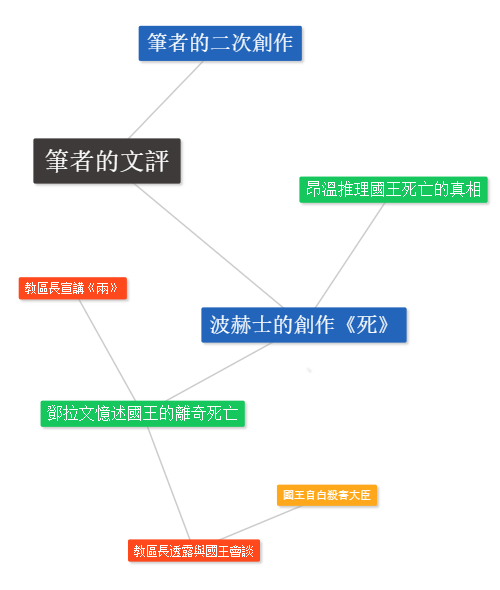
在成為獨當一面的軟件開發者的道上迷途的程式人。興趣廣泛但學無專精,除了會寫code,偶爾也會寫寫字,射射箭。
The Fifth Dimension Labyrinth of Bohes (Part 2)
Bohes "Aben Hakan-El-Bohari Who Died in His Labyrinth", "Two Kings and Two Labyrinths", after reading the postscript
Previous: Bohes' fifth-dimensional labyrinth (Part 1)
"Two Kings and Two Labyrinths"
"Una leyenda arábiga (Historia de los dos reyes y los dos laberintos, como nota de Burton)"
This one-page short story follows "Aben Hakan-El-Bohari who died in his own labyrinth" ("Death"), and the author's note also makes it clear that this is exactly the one the rectory preached in "Death" Fable.
(For illustration, the following contains a lot of spoilers.)
The story is about a Babylonian king who built a labyrinth with countless walls and branches, and tricked an Arab king into the labyrinth to shame him. Later, the king of Arabia succeeded in revenge and sent troops to capture the king of Babylon, and took him to the middle of the desert, a labyrinth without walls and branches. Finally the Babylonian king died of thirst in the labyrinth of sand.

Man-made and God-made (nature), with countless walls and branches and labyrinths without walls and branches, are equally disorienting. In fact, no bifurcation is equal to an infinite number of bifurcations. Like the author's other works, Bohes once again presents the duality of the dualistic concepts of labyrinth, nothingness, and infinity through stories. Putting the two stories together is actually part of the author's clever layout.
"Death" and "Two" constitute a play within a play that echoes each other. "Two" has two kings, one leads the other into a labyrinth to die of thirst. And the Unwin version of "Death" also has a real and a fake king, and the fake king induces the real king to kill in the labyrinth.
The author's ingenuity doesn't stop there, Bohes also arranges a literary technique called Mise en abyme ( Mise en abyme ) throughout "Death". Dunraven called the king of Africa the king of Babel, and his allusions to the Babylonian king who built the Tower of Babel was condemned by heaven, echoing the preaching story of the rectory ("Two"): the king who built the labyrinth was punished, which in turn predicted the African king who built the labyrinth Killed by ghosts.
Another set of narrative endoscopes prompted Unwin's reasoning: the spider web that appeared in the African king's dream (and the subtitle of "Death") was the hunting ground where spiders guarded and waited for rabbits, and the mythical tauren who exiled young girls as feed The labyrinth is a homogeneous idea; coupled with the mismatch of the head and body of the tauren, it implies the fake identity of the king in the labyrinth, and the purpose of building the labyrinth is not to hide but to kill.
In addition to the aforementioned in-play and narrative endoscopy, "Death" itself is a framed story about the storytelling of Dun Lavin, Unwin, the rectory, the king, and others. Bohes even claimed in the postscript that "Two" is actually a broken chapter of the famous "One Thousand and One Nights" in a pseudo-framework. Let's take a closer look at the structure of this framework:
It started with the creation of "Aben Hakan-El-Bohari who died in his own labyrinth" ‧‧‧

In "Death" Dun Lavin recounts the bizarre death of the king

Dunlavin's recollection includes the rectory preaching "Two Kings and Two Labyrinths" (also by Bohes) and revealing a meeting with the king.

During the talks, the king confessed to the past of killing his ministers‧‧‧

‧‧‧Then "Death" Leon Win deduces the truth of the death of the real and false kings‧‧‧

One day, the author wrote down after reading "Bohes's Labyrinth of the Fifth Dimension (Part 1)", in addition to retelling the story of "Death", there is also the author's secondary creation.

Ordinary labyrinths bifurcate in the three dimensions of physical space. Boges imagined a labyrinth that bifurcates in the time dimension in "The Garden of Crossing Paths", while in these two works, he constructs a narrator's perspective. Cha's labyrinth of the fifth dimension. One narrator after another, repeating layer by layer, makes the story derive one version after another during the reading process, making the reader lost in it.
Now, after reading this article, what kind of bifurcation are you going to write?
Originally published at CY L. @ Medium on April 24, 2019.
Like my work?
Don't forget to support or like, so I know you are with me..
Comment…